 |







|
|
ART - LUINI - VIRGIN AND CHILD WITH ST. JOHN
- PAGE 3
|
|
Salt of the Earth |
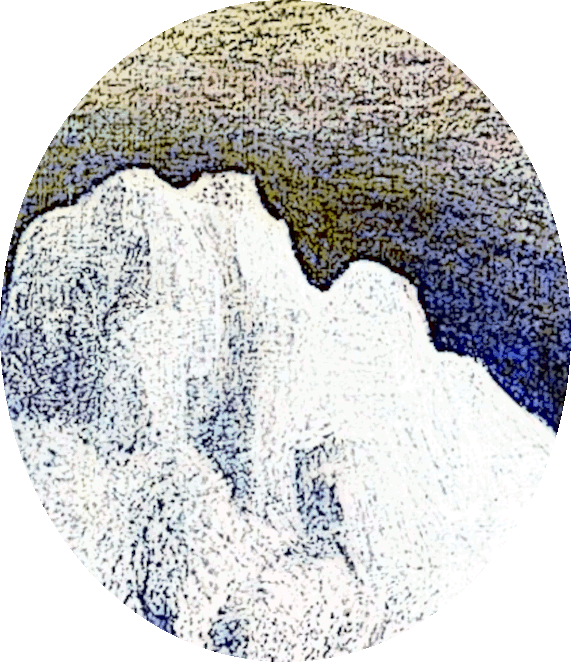
Spiritual salt |
- Salt, which we place on our tables, has a much deeper meaning
in our lives and plays a crucial role in spirituality.
- It has
been used not only for enhancing the taste of our food, but also can
be a powerful spiritual protector and a symbol of preservation,
healing and even destruction.
- Salt is not just an ingredient,
it is a univeral symbol of purification present in varius cultures
and traditions throughout history.
- A person who is the salt of the earth is very honest, kind-hearted, and reliable.
- Salt of the earth is a phrase used by Jesus in the Sermon on the Mount, part of
his
sermon about salt and light.
|
Ye are the salt of the earth: but if the salt have lost its savor, wherewith shall it be salted? it is thenceforth good for nothing, but to be cast out and trodden under foot of men.
(Matthew 5:13)
|
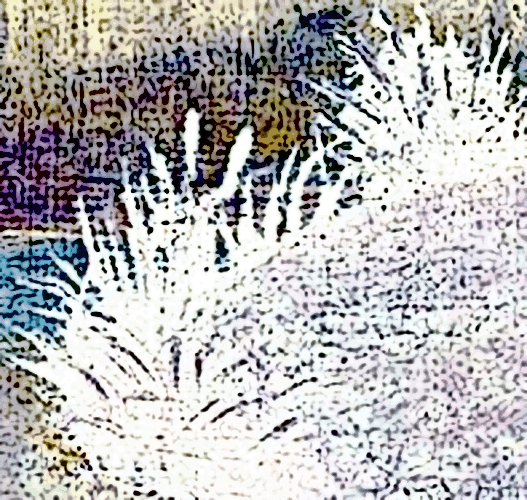
Salty earth |
- The salt of the earth is the
substance that gives life and maintains creation in balance and this
vision makes us ponder whether salt is the key to preservation of
the soul.
- Today, salt is easy to come by in our culture, and we don’t necessarily need it as a preservative because of refrigeration,
but to the people of Jesus’ day, salt was an important and precious commodity.
- When Jesus told His disciples that they were 'the salt of the earth,' He meant that believers have value in this world and are to have a preserving influence.
|
Let your speech always be gracious, seasoned with salt, so that you may know how you ought to answer each person.
(Colossians 4:6)
|
|
Language |

Salt
spoken |
- Say what you mean, mean what you say, and never be mean when you say it.
-
Someone who's tough and blunt-spoken can be described as salty.
-
The word salty first appeared in the 1440 Latin-English dictionary
Promptorium Parvulorum as a translation of the Latin salsus, which means both
'salty' (tasting of salt) and 'salted' (covered or preserved in salt).
- It took several hundred more years for salty to be applied to things having to do with
actual saltwater found in an ocean or sea.
- Salty referred initially to taste only, not temperament.
|
European languages derive their word ‘salt’ from Proto-Indo-European *sāl- (*sēl-) reflected directly in Latin as sal, ‘salt, salt water, brine; intellectual savour, wit’, Greek hals, ‘salt, sea’ (cf. Welsh halen) and in Proto-Germanic as *saltom (Old English sealt, Gothic salt, German Salz).
(aaroncheak.com)
|

Salty language |
- Salt in Spanish is sal and in French, it's sel.
- Sailor is an 'old salt.'
- To 'salt away' is to save something.
- Not enough sense to pound salt is someone who is not very clever.
- A person who is below the salt has a low social status.
- To be salty is to be upset, annoyed, or angry about something and
salty language can also include profanity.
- Back to the salt mines is saying that you are returning to work.
- Salting or to salt the mine is to trick or deceive someone.
- If you throw salt on someone’s game or salt their game, you disrupt and interfere with their plans.
|
To rub salt into the wound (poner sal en la llaga).
|
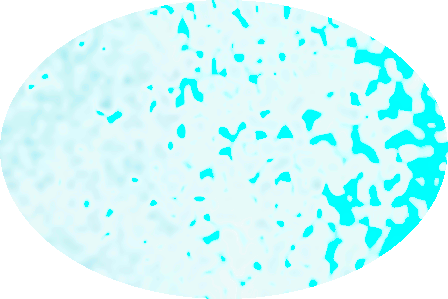
Grain of salt
|
- The term, taking something with a grain of salt, is slightly different in its American and British usage; a
'grain' of salt in American culture and a 'pinch' of salt in British culture.
- Pliny the Elder first used the phrase when translating an antidote for poison, saying to take the antidote with a grain of salt.
- That could be because food is more easily swallowed if taken with a small amount of salt.
- It should be just a grain because too much salt is in itself poisonous.
|
Take it with a grain of salt.
(Pliny the Elder)
|
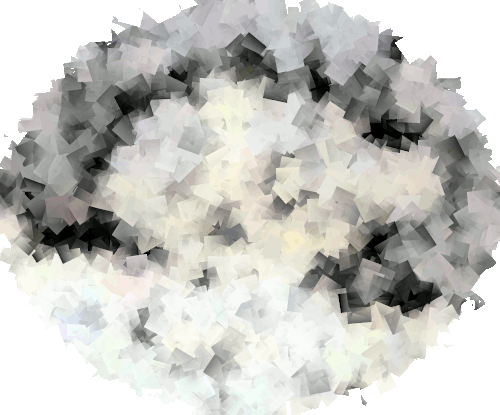
Salty bird |
- If you can put salt on a bird's tail, you can catch it.
- All seabirds and many shorebirds have a pair of glands which perform one of the kidney’s main functions: drawing salt ions out of the bloodstream.
- This salt gland allows these birds to drink the water they live in.
|
The Buckes or Hartes horne, whose leaues be sweete in tast, & somwhat saltie,...
(Thomas Hill, The Gardener's Labyrinth, 1577)
|
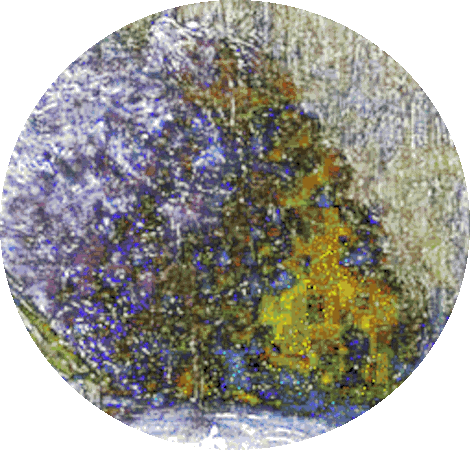
Salt-and-pepper |
- Salt-and-pepper hair is a mixture of dark hairs and gray or white hairs.
- The first known use of salt-and-pepper was in 1835.
- Can refer
to anything having dark and light color intermingled in small flecks.
|
Every individual rises again in the very form which his
work (in the alchemical sense) has fixed in the secret (esoteric) depth of himself.
(Shaikh Ahmad Ahsa'i)
|
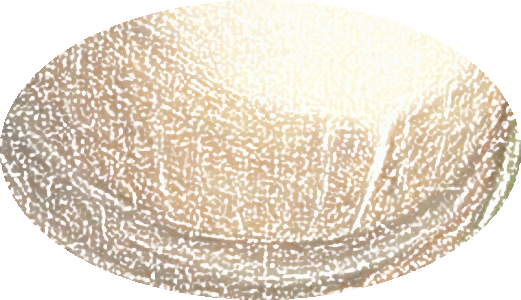
Salt sweat |
- The cure for anything is salt: sweat, tears or the sea.
- Where would we be without salt?
- It is a biological fact that all of us have in our veins the exact same percentage of salt in our blood that exists in the ocean.
|
Salt, gathered from the tears of a thousand angels, restraining the essence of Sammael, the Hellhound. The Seed of Destruction. This I can promise, Sammael, for every one of you that falls, two shall arise.
(Grigori Rasputin)
|

Salt Sumo |
- The Japanese have the same beliefs about salt as other
countries around the world.
- This is why the Sumo wrestlers
throw salt into the ring before they perform insuring that the space
is protected from negative energy and spiritual influences.
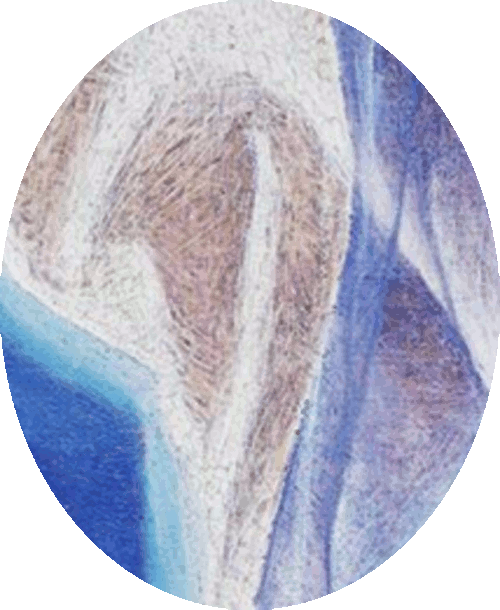
Salt salary
|
- Salt was also vital in ancient times not only as a
substance of spiritual value, but also for its economic value.
- The word salary comes from an ancient word meaning 'salt-money,'
which refers to a Roman soldier’s allowance for the purchase of salt.
- Salt has a storied history with humankind;
from wars to taxes to religious ceremonies, salt has been a large part of civilization, dating back to the first salt mining in 6,000 BC.
- Someone who earns his pay is still said to be 'worth his salt.'
|
No man is worth his salt who is not ready at all times to risk his well-being, to risk his body, to risk his life, in a great cause.
(Theodore Roosevelt)
|
|
Chemistry |

Salt compound |
- In chemistry, a salt or ionic compound is a chemical compound
consisting of an assembly of positively charged ions (cations) and
negatively charged ions (anions).
- Resulting in a compound with no net electric charge (electrically neutral).
- Salt symbolizes taste, enables food to be conserved, and even
has been used to mummify bodies.
- Salt and sugar look similar;
but sugar is a darker shade of white and has a distinct smell.
- The trick is to lick them to determine their nature, much like with salt and sugar.
|
In chemical terms, salts are ionic compounds. To
most people, salt refers to table salt, which is
sodium chloride. Sodium chloride forms from the ionic
bonding of sodium ions and chloride ions. There is one
sodium cation (Na+) for every chloride anion (Cl–), so
the chemical formula is NaCl.
(American Chemical Society)
|

Salt crystal |
- Salt is a crystal with the ability to transmute and even
amplify energies.
- Table salt is a combination of two minerals; about 40% sodium and 60% chloride.
- It has a crystalline structure which forms
naturally and symmetrically and is often seen as a representation of
balance and order in the universe.
- Like all crystals, salt has
a molecular structure capable of absorbing vibrations and when used
correctly, it can act as an energy sponge, soaking up everything
heavy or dense.
- Minerals are essential nutrients
and low levels of sodium, calcium, and magnesium can alter the electrical activity of brain cells and cause seizures.
- It's just amazing that such
a simple crystal could be so deeply connected to cosmic harmony.
|
No seconds? All myself?
Why, this would make a man a man of salt,
To use his eyes for garden waterpots,
Ay, and laying autumn’s dust.
(Shakespeare, King Lear)
|
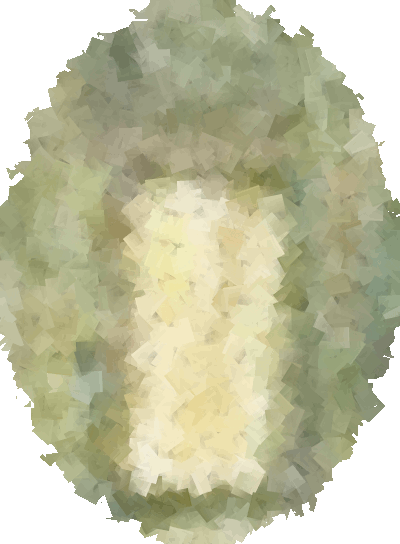
Salt bitters |
- Normal table salt, the mineral halite, is chemically described as sodium chloride.
- Often found together in different concentrations are the bitter salts of potassium and magnesium.
|
Mine eyes are full of tears, I cannot see:
And yet salt water blinds them not so much
But they can see a sort of traitors here.
Nay, if I turn my eyes upon myself,
I find myself a traitor with the rest.
(Shakespeare, Richard II)
|

Salt
mixed doubles |
- There are several different types of salt; normal,
basic, mixed, acidic, double and complex.
- Both mixed salts and double salts are types of chemicals created when two or more distinct salts are combined.
- The main difference between mixed salts and double salts is whether the constituent salts undergo a chemical reaction or are only physically combined.
- A salt that is formed as a result of the reaction between a weak base and a strong acid is called an
acidic salt.
- Basic salts are formed when a weak acid is neutralized by a strong base.
|
Examples of mixed salts include sodium potassium chloride (NaKCl), while examples of double salts include Mohr's salt (ammonium iron(II) sulfate, (NH4)2Fe(SO4)2·6H2O) and Tutton's salts (e.g. potassium copper sulfate, K2Cu(SO4)2·6H2O).
|
|
Types of
Salt |
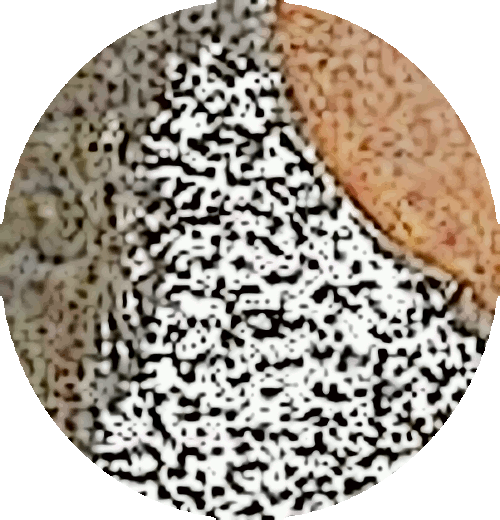
Salt shaker |
- Artisan salts are 'fancy' finishing salts that have
special purposes besides flavoring your food (which is the main
purpose of table salt).
- There are at least 15 different types of culinary artisanal salt;
pickling salt, curing salt, smoked salt, truffle salt, Sale di
Cervia, Fleur de sel, Celtic salt (gray salt, sel gris), black lava
salt, Hawaiian alaea salt (red salt), Himalayan pink salt, Himalayan
black salt, flake salt, sea salt, Kosher salt, refined salt (table).
|
All salt is technically sea salt, since it’s
produced in three distinct ways from three different
marine sources: evaporating brine from modern oceans,
harvesting the dead seas and the excavation and mining
of ancient sea beds.
(Austen Diamond, Mighty Mineral)
|

Table salt |
- Salt is a simple necessity, and the taste for salt is the simplest and most basic sense of taste we have.
- The simplest receptor found in the mouth is the sodium chloride (salt) receptor.
- A common substance, chemically consisting mainly of sodium chloride (NaCl), used extensively as a condiment and preservative.
- Iodized salt is table salt mixed with a minute amount of various salts of the element iodine
for human health benefits.
|
Table salt undergoes extensive refining and may have additives like iodine, anti-caking agents, and preservatives.
(organicindia.com)
|
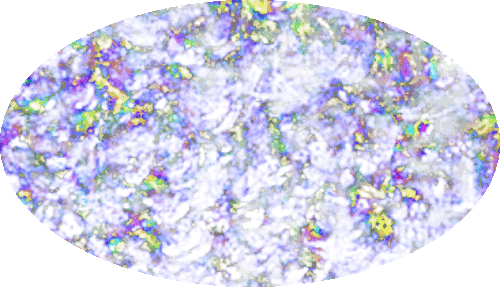
Sea salt |
- Sea salt is a general term for salt produced by solar evaporation of ocean water or water from saltwater lakes.
- With this method, small crystals are left behind during the
drying process and this natural type of sea salt is a good option
for daily intake.
-
Sea salt is often sold as larger 'salt flakes.'
- It is less processed than table salt and retains trace minerals
which add flavor and color and is available as fine grains or crystals.
- However, if you buy sea salt that is obtained through
desalination, you will also take in the chemicals that are used to
separate the salt from the sea water.
|
Sea salt moderately heats the body tissues, so while it still has a heating potency, it does so a lot less than table salt does. Sea salt is also used as a purgative and in colics. It does have a pungent post-digestive effect though, making it irritable to the colon when used the wrong way or in excess.
(gingerandyoga.com)
|

Rock salt |
-
Rock salt is a natural mineral that has been used for centuries to
preserve foods.
- The varying ratios of the minerals are responsible for the salt’s hues ranging from characteristic reddish pink to white to a grey hue.
- Unlike table salt, which undergoes
extensive refining, rock salt is left unprocessed, retaining its
natural mineral composition and characteristic taste.
|
The Indian Name of Rock Salt is Sendha Namak, with Sendha meaning rock and Namak meaning salt in Hindi.
(organicindia.com)
|

Rock Salt soma |
- Rock salt differs from common table salt in terms of its mineral
content and processing.
- White Himalayan salt (soma) is the type of salt that is considered to the best of all to use
for everyday use.
- White symbolizes purity and new beginnings
and it also represents clarity.
- Today, rock salt is a cost-effective and productive solution in a variety of industries including the chemical industry, textiles, health, and ice management, as well as domestic use.
|
Good for all three doshas, increases the digestive fire (agni), cools the liver and is beneficial for all 7 body tissues.
Soma is called the queen of all salts according to Charaka Samhita (chapter 27, verse 300).
(gingerandyoga.com)
|
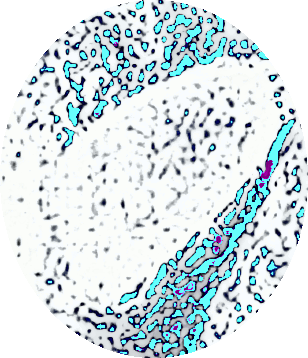
Rock Salt benefits |
-
Rock salt is more beneficial for high blood pressure and it is advisable for individuals suffering from hypertension to include rock salt in their daily meals
intead of table salt.
- Rock salt has a higher magnesium content than normal table salt,
and can help restore normal magnesium levels in the body, thereby reducing painful muscle cramps.
-
This is the best type of salt to include in your diet, medicine and even your baths
since it is raw, unrefined salt, formed through the evaporation of ancient salt lakes.
|
Whatever you do, avoid processed foods and junk food at all costs. Cook more and eat less outside, for you will never be sure about the type of salt that is used in your food. Overall you can expect companies to use the cheapest type of salt to prepare these type of foods, including additives that will support addictive behaviour to the products they sell.
(gingerandyoga.com)
|
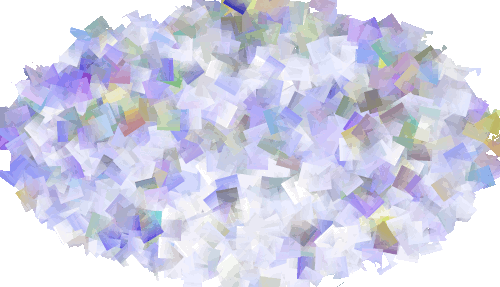
Road salt |
- Road salt used to melt ice is not always pure sodium chloride, but frequently contains other ice melting compounds that are
not for human consumption.
|
Trust no one unless you have eaten much salt with him.
(Marcus Tullius Cicero)
|
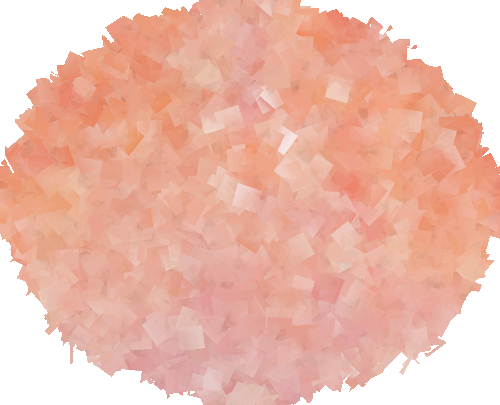
Himalayan salt |
- Himalayan salt is a form of rock salt from the Punjab region
of India used for seasoning food and for making decorative lamps, etc.
- Composed primarily of sodium chloride (NaCl), along with 84 out of the 92 trace elements required by the body including potassium, iron, calcium, zinc, magnesium, and copper.
- Generally, light reddish pink in color, it has rough crystals that have a mild earthy flavor.
|
Sendha Namak or Himalayan pink salt (other names include polyhalite, and Himalayan crystal salt) is the purest form of salt.
Mined from ancient underground salt deposits and mines of the Salt Range mountains between the valleys of the Indus and Jhelum rivers, rock salt's formation can be traced back to millions of years ago when ancient seas evaporated, leaving behind vast salt reserves buried deep within the Earth's crust.
(organicindia.com)
|
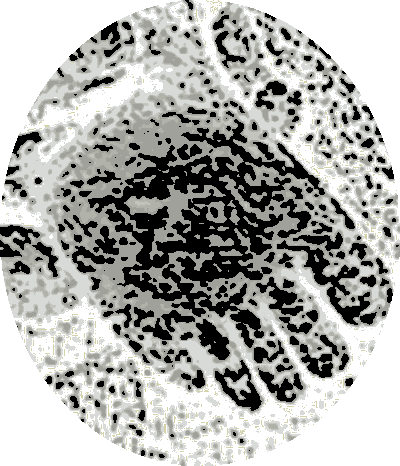
Black salt |
- Kala namak or Black Salt is reddish black and has a slightly sulphurous smell and taste.
- Therapeutically, colored salts have different healing
properties from one another, due to the various minerals found in
each.
- Volcanic rock salt which can be pinkish or greyish, according to where it’s harvested and how many trace minerals are in it.
- It has a sulfur and slightly sweet taste and has a heating potency
that can aid digestion when ground with lemon juice and caraway (ajwain).
|
Salt is the only rock directly consumed by man. It corrodes but preserves, desiccates but is wrested from the water. It has fascinated man for thousands of years not only as a substance he prized and was willing to labour to obtain, but also as a generator of poetic and of mythic meaning. The contradictions it embodies only intensify its power and its links with experience of the sacred.
(Visser)
|

Kosher salt |
- Certified kosher salt is mined, just like all other types of salt,
however, the difference is that the mining, processing, and packaging happens under strict Jewish guidelines
that the entire world ends up paying for.
- There are numerous names for coarse salt;
rock salt, sea salt, and flake salt are all names for cooking salt
and despite the fact that it is a coarse salt, many people call it kosher salt.
- This is apparently
because every single food item we purchase must be marked with their
Kosher symbol or else the Jews won't know what to eat?
- The only
difference is the Kosher stamp on the package, basically that's it.
|
What's the difference between kosher salt and regular salt?
As it turns out, not a whole lot! It is not blessed by a rabbi nor is it healthier than any other salt. The only difference is that it is composed of large irregular shaped flakes which, after slathering it on a piece of meat to draw out the blood, can be easily washed off.
There is only one nutritional difference between regular salt and kosher salt.
(mcgill.ca)
|
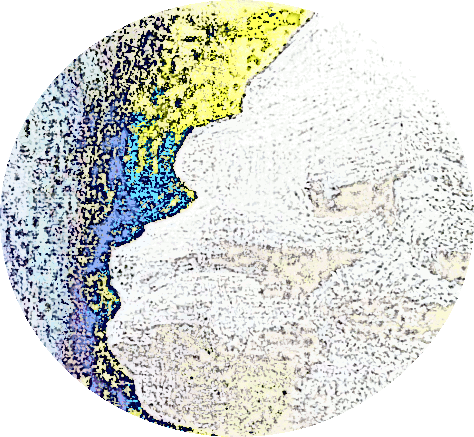
Salt
lick |
- Animals know how vital salt is and herding mammals will travel hundreds of miles to salt licks to replenish their bodily stores.
- Birds also map out locations of salt licks.
- As mammals, our body 'knows' and can regulate the use of its own salt
requirements, including how much to use from what is stored in the
body, or how much needs to be consumed.
- Below the threshold of our consciousness, our body depends upon and knows how to regulate many of our most basic needs.
|
There is a deep mystery in simple things; a
handful of salt can be both a guardian of blessings
and a vehicle of curses.
(C. S. Lewis)
|
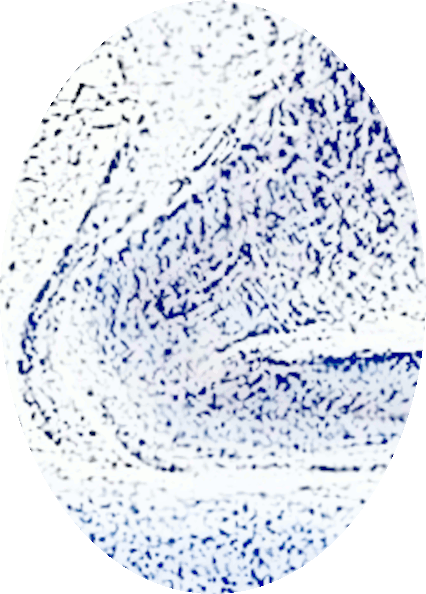
Salt taste |
- The salty taste, among all the tastes can be uniquely
positive or negative.
- Just the right amount, and our food tastes very
savory; the thought of salt on french fries or roasted nuts is very
appealing.
- A little bit too much of salt and the savory becomes the sour (or rather some amalgam of sour-bitter)
and too-much salt is experienced as repulsive; we pull back from the taste.
- Sugar, by contrast, is sweet and attractive no matter how
little or how much you encounter.
|
When man first learnt the use of salt is
enshrouded in the mists of the remotest past. Parallel
to the Ancient Greek’s ignorance of the seasoning, the
original Indo-Europeans and the Sanskrit speaking
peoples had no word for it. This apparent lack of
salt-craving in early people could have been a result
of their reliance on raw or roasted meat.
(aaroncheak.com)
|

Salt water
|
- Sea water may cause you to become dehydrated and sick to your stomach if you drink it.
- For the Egyptians, anything connected with the sea was, in general, evaluated negatively.
- Sea-salt in particular was regarded as impure, the 'spume' or
'foam' of Typhon.
- The Egyptians viewed salt water negatively
because the Nile’s pure waters ran down from their source and emptied into the unpalatable, salty Mediterranean.
|
She is drowned already, sir, with salt water, though I seem to drown her remembrance again with more.
(Shakespeare, Twelfth Night)
|
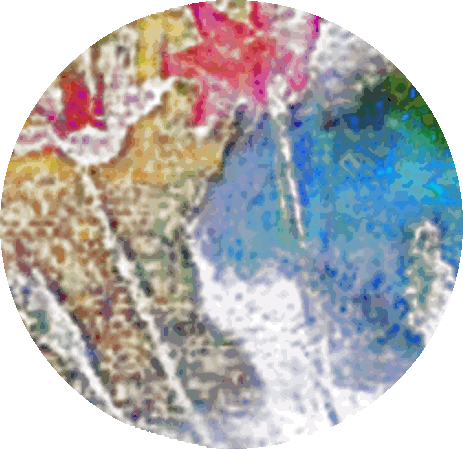
Saline water |
-
Saline water is saltier than brackish water, but less salty than brine.
- Medical saline water is made of sodium chloride (table salt) and purified water
whereas sea water is composed of sea salt, mostly sodium chloride, and water.
|
First, medical saline only contains about 0.03
ounces per quart of sodium chloride. Sea water has a
lot more sodium—around 1.23 ounces per quart.
(ispyphysiology.com)
|
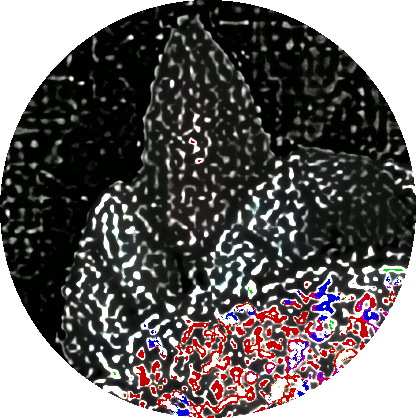
Salted meat |
- The act of massaging salt and pepper into the surface of beef, poultry, lamb, and pork prior to cooking enhances the flavor as well as texture.
- This can also act as a meat tenderizer.
- The earliest known mention of beef jerky comes from a Chinese document from
14th century.
- It is thought that Roman soldiers discovered dried meats while
stationed in present-day Turkey and brought the idea back to Rome
with them where it was a delicacy.
- The first recorded mention
of beef jerky in the Americas comes from Spanish explorer Juan Ponce
de Leon, who wrote in his journals that Native Americans were drying
strips of meat in the sun as early as 1521.
|
Cheese and salt meat, should be sparingly eat.
(Benjamin Franklin)
|

Salted fish |
- Salt fish is usually cod or another fresh, meaty white
fish that has been salt-cured and dried until all the moisture is
extracted from it.
- There are two methods of salting fish; the
dry method and the brine method; in both, the fish is placed in a
container in alternating layers of fish and salt.
- Traditionally, recipes call for salted codfish, however, pollock, hake, cusk, and haddock are offered salted and dried
as well.
|
The peaks of the Apennines once stood up in a sea, in the form of islands surrounded by salt water... and above the plains of Italy where flocks of birds are flying today, fishes were once moving in large shoals.
(Leonardo DaVinci)
|
|
Spiritual |
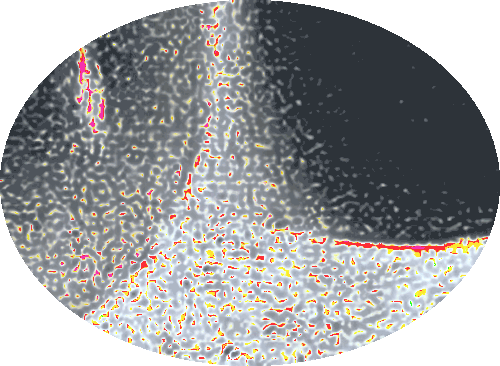
Salty dog |
- You must learn how to use salt correctly to defend
yourself, your home, and your family from negative forces that might
be acting in your life.
- Salt has been used throughout history
both as a powerful curse or a blessing.
- Salt has the ability to
absorb and neutralize negative energy because it acts as an
invisible barrier and when it comes in contact with dense
vibrations, these energies get trapped in its crystalline structure.
- It acts as a filter, holding on to everything that no longer
serves you.
- It's very obvious that
the Bible warns us about negative spiritual energies or forces.
- You can't plead ignorance because you can't see them; or somehow
think you're safe because you're ignorant.
|
For we wrestle not against flesh and blood, but against principalities, against powers, against the rulers of the darkness of this world, against spiritual wickedness in high places. (Ephesians 6:12)
|

Salt hovering over the
water |
- Salt is not merely a simple mineral, it's been around
since the beginning of time and was formed from one of the processes
that occurred during the creation of Earth.
- It has been a
silent witness to the Earth's history.
- From the earliest days,
according to the Bible, when God separated the waters and created
the land, salt was there as an essential component of this creation.
- But salt is not just a physical element, it possesses a
profound spiritual dimension which symbolizes purity and the power
of the creator.
|
We have some salt of our youth in us.
(Shakespeare, The Merry Wives of Windsor)
|
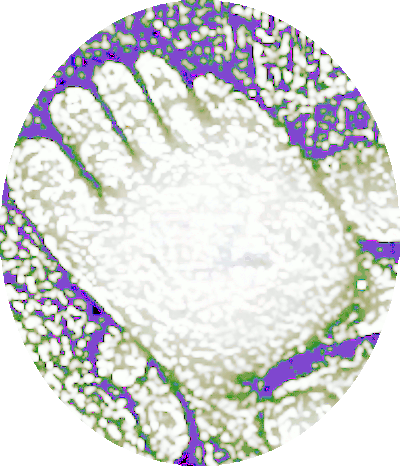
Salt rub |
-
Salt has always been known for its preservative properties, and it is also possible that God instructed the use of salt so that the meat would last longer and taste better
and therefore would be of more value to the priests who depended upon it
for their substenance.
- He called this promise of provision a 'salt covenant' to provide
food.
- This is something that was vital in ancient times for survival.
|
On the day you were born your cord was not cut, nor were you washed with water to make you clean, nor were you rubbed with salt or wrapped in cloths.
(Ezekiel 16:4)
|
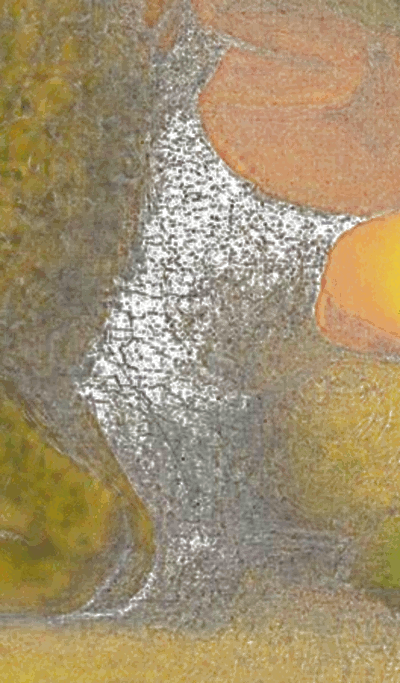
Salty soul |
- On the spiritual plane, salt has the ability to protect
the integrity of the soul by sheltering it from corruption and evil
influences.
- The divine promises that God made with us are
eternal.
|
Whatever is set aside from the holy offerings the
Israelites present to the Lord I give to you and your
sons and daughters as your perpetual share. It is an
everlasting covenant of salt before the Lord for both
you and your offspring.
(Numbers 18:19)
|
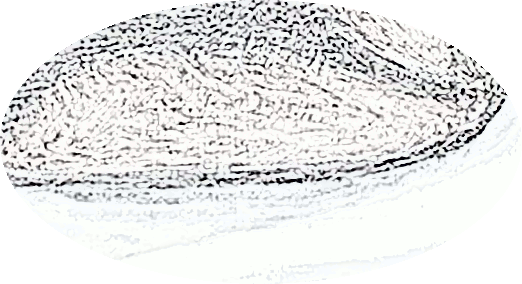
Salt bowl |
- When we look at Bible Scripture, we see that salt
appears in many meaningful ways and each passage reveals something
unique about it's spiritual power.
- Elisha healed the waters of
Jericho in an act that showed when salt is combined with faith and
divine intention, it has the power to purify and heal.
- Jericho had
been cursed by Joshua and by purifying the water with salt, Elisha
not only broke the curse but restored divine grace to the city.
|
The people of the city said to Elisha, “Look, our lord, this town is well situated, as you can see, but the water is bad and the land is unproductive.”
“Bring me a new bowl,” he said, “and put salt in it.” So they brought it to him.
Then he went out to the spring and threw the salt into it, saying, “This is what the Lord says: ‘I have healed this water. Never again will it cause death or make the land unproductive.’”
And the water has remained pure to this day, according
to the word Elisha had spoken. (Kings 2:19-22)
|

Salt curses
into
blessings |
- Salt is more than just an element of purification, but
it is a symbol of redemption capable of transforming curses into
blessings.
- It is as if God is saying to remember that your
actions must always be pure and faithful.
- Salt symbolizes the
inevitable result of disobedience and is also a symbol
of divine judgment and shows that salt is a physical marker of
resistance to the divine command.
- This is a profound symbol
that repeatedly appears in the Scriptures to remind us of the
importance of faithfulness, purity and obedience to divine laws.
|
But Lot’s wife looked back, and she became a pillar of
salt. (Genesis 19:26) |

Salt king |
- Are we using salt only as a seasoning, or can we see it
as a tangible connection to the divine.
- In the ancient world, ingesting salt was a way to make an agreement legally binding.
- If two parties entered into an agreement, they would eat salt together in the presence of witnesses, and that act would bind their contract.
|
King Abijah’s speech in 2 Chronicles 13:5 mentions just such a salt covenant: “Don’t you know that the LORD, the God of Israel, has given the kingship of Israel to David and his descendants forever by a covenant of salt?” Here, Abijah refers to the strong, legally binding promise of God to give Israel to David and his sons forever.
(gotquestions.org)
|

Covenant of salt |
- In the second book of Chronicles, God's covenant with the Davidic kings of Israel is described as a covenant of salt.
- This is because
it's a perpetual covenant, because of the use of salt as a preservative.
- The Old Testament law commands the use of salt in all grain
offerings because the Levitical priests did not own land of their
own, God promised to provide for them via the sacrifices of the
people.
- In the Book of Numbers, God's priestly covenant with the Aaronic priesthood is said to be a covenant of salt.
|
Season all your grain offerings with salt. Do not leave the salt of the covenant of your God out of your grain offerings; add salt to all your offerings.
(Leviticus 2:13)
|
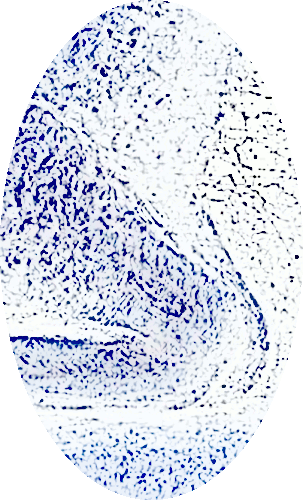
Salt
offerings |
- In ancient times, the Israelites made offerings to the
gods with salt and used it in all their sacraments to ensure
offerings were pure and acceptable.
- Egyptian priests favored rock salt in
sacrifices as purer than sea salt; and yet one of the things
forbidden to them is to set salt upon a table.
- Negative Egyptian views on salt, mainly seem to apply to times of ritual fasting.
- While sea salt was avoided
by Egyptian priests, salt in rock form was considered quite pure and
they were known to access mines of rock salt from the desert Oasis of Siwa.
|
The sea is salt because so many things flow together and become mixed in it...
(Hippolytus)
|

Salt rituals |
- The Greeks abstained completely from salt as a point of religion, even eating their bread unsalted,
however they would offer it to the gods during consecration rituals
and considered it a gift from the gods.
- This practice
continued over the centuries adapting to different cultures and
religions, but always as a symbol of purity, holiness and spiritual
power.
|
It should be brought to the table to remind us of what is right; for salt preserves whatever it finds, and it arises from the purest sources, the sun and the sea.
(Pythagoras)
|

Salt protection |
- Salt, with its purifying power and protective
properties, is one of the oldest and most powerful weapons in
spiritual warfare.
- Salt can be used in various ways to ensure
the protection and purification of people, objects and environments.
- One of the most common ways to use salt in spiritual warfare is in
the purification of spaces, such as sprinkling consecrated (blessed) salt in the four
corners of a house or room.
- This creates a circle of protection,
preventing negative energies from entering or remaining in the
space.
|
Trade liberty for safety or money and you'll end up with neither. Liberty, like a grain of salt, easily dissolves. The power of questioning - not simply believing - has no friends. Yet liberty depends on it.
(Thomas Jefferson)
|
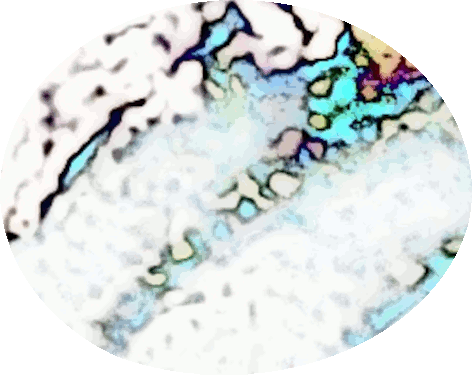
Salt line |
- Another common procedure is to create a barrier by
sprinkling a continuous line of salt along the doors and windows of
your home.
- For this to work, the act of scattering salt should be
accompanied by prayers or invocations that reinforce the intention
of purification.

Salt consecration |
- A combination of faith, along with the physical act of
blessing or prayer, activates the spiritual properties of salt.
-
By doing this,
you are not only creating a sacred environment, but also inviting
the presence of the divine.
- Salt can also be used to consecrate
objects such as sacred utensils, talismans and even money can be
purified with salt to remove any negative energy that may have
accumulated.
|
Let yourself be open and life will be easier. A spoon of salt in a glass of water makes the water undrinkable. A spoon of salt in a lake is almost unnoticed.
(Gautama Buddha)
|

Salt blessed |
- Consecrating salt involves dedicating it to divine
service transforming it from a simple mineral into a powerful tool.
- This can be performed through a specific prayer asking God and
your spiritual guides to bless the salt making it effective against
any evil force.
- The Hebrew's use salt in consecration and
purification ceremonies and in the Talmud, salt is
mentioned as a symbol of covenant and purity.
|
It turned out that salt was once a microcosm for one of the oldest concepts of nature and the order of the universe. From the fourth century BC Chinese belief in the forces of yin and yang, to most of the worlds religions, to modern science, to the basic principles of cooking, there has always been a belief that two opposing forces find completion—one receiving a missing part and the other shedding an extra one. A salt is a small but perfect thing.
(Mark Kurlansky)
|

Salt purifier |
- The process of consecration is especially important for
items that are used in rituals and must remain free from malevolent
influences.
- When salt comes into contact with any of these
objects, it absorbs any spiritual impurity making them fit for
sacred use.
- This use of salt as a purifier is a practice that
transcends cultures and eras, demonstrating its efficacy and power
throughout history.

Salt prayer |
- In situations with more intense spiritual warfare, salt
can be used to neutralize spells and curses but it is essential that
the salt be consecrated specifically for this purpose.
- This is
accomplished through a powerful prayer or a dedicated ritual and
once consecrated, the salt becomes an extremely effective spiritual
tool capable of breaking curses and restoring spiritual harmony
wherever it is used.
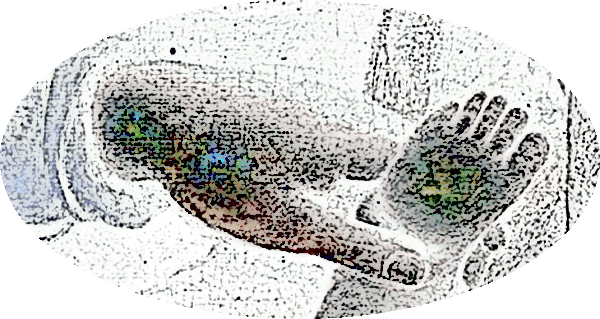
Salt family |
- Curses or ancestral bonds affecting your family can be
removed in family liberation rituals where consecrated salt can be
sprinkled on specific points on the body (wherever there is a
hereditary curse).
- Our DNA passes all our ancestors 'sins' to
us, things like addictions, anger, cancer, etc.
- The ritual should be performed with great
reverence as it aims not only to protect the current generation but
to liberate all future generations.

Sophia salt |
- In Gnosticism, salt is seen as a symbol of divine wisdom
transmitted to the individual through spiritual experience.
-
Salt is seen as a purifier of the mind and spirit allowing the
individual to reach a state of clarity and spiritual understanding.
- This can open the door to deeper understanding of reality
moreover, in alchemy, salt is associated with the preservation of
life and immortality.
- It's believed that salt has the power to
preserve the soul as it preserves food and the fact that salt
prevents decay is rooted in the idea that it is a symbol of
immortality and eternity in alchemy.
|
Natural product of Mediterranean crystal waters, strong winds, and hot sun.
(Sophia Salt)
|
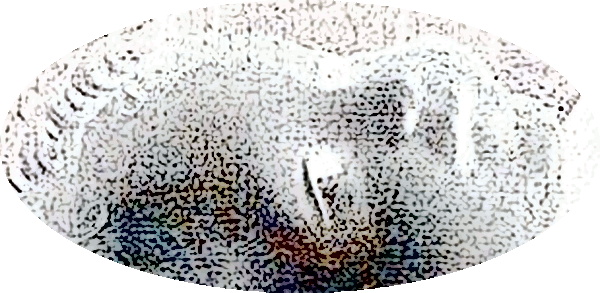
Divine salt |
- Salt is sometimes used to express promises and friendship between people.
- It was considered by the Greeks to be divine.
- Today in many
Middle East and Arab cultures, if two men partake of salt together they are sworn to protect one another; even if they had previously been enemies.
- Sharing salt with another symbolizes the creation of a sacred
bond and a promise of eternal loyalty that transcends life and death
that make us reflect and wonder if we are underestimating the
importance of this gesture.
|
Salt is the guardian of the secrets of the Earth
and the mysteries of the spirit.
(Paracelsus)
|

Salt thrower |
- In some cultures, people throw salt over their shoulders when they make a promise.
- In Africa, salt is used in initiation and healing rituals and
many tribes consider it a gift from god used to bless and protect
initiates and provide a direct connection with the divine.
- In
wedding ceremonies couples share salt as a symbol of union that
should be as enduring and incorruptible as the mineral itself.

Salt blesser |
- Within Christianity salt is blessed and used in exocism
rituals to expel demons and evil spirits and is especially common in
the Catholic Church.
- In Hinduism, salt if frequently used in
spiritual cleansing rituals during purification ceremonies and salt
is scattered around temples and homes to ward off evil spirits and
attract positive energies.
- The Hindu also believe that salt has
the ability to harmonize and bring peace dispelling any negative
influence.
|
Simple
purification ritual |

Salt be gone |
- Gather together a sheet of white paper, black pen,
plastic bag and some rock salt.
- The white paper is used to
write down everything that troubles you, and black ink, which is
associated with mystery, is the color of closure.
- It signifies
the power of the black pen and places a clear boundry between what
was, and what will be.
- Each word you write is like a command to
the universe and by listing your troubles, you are actively closing
that cycle.
- The black pen gives form to your intention, making
the invisible, visible, and it helps you take control of the
situation reaffirming that you have the power to decide what stays
and what leaves your life.

Salt and black ink |
- Transfering negative emotions to the paper is where you
will release once and for all.
- This is the moment to face
everything that bothers, burdens or holds you back.
- The act of
writing everything on the paper is a direct energy transfer, and
allows you to take everything inside you, your pains, your worries,
and blockages; and place them outside where they can no longer
consume you.
- Writing is not just a ritual, it allows you to
take your chaotic thoughts and organize them.
- Every word you
write is like a thread of energy disconnected from you and leaving
the weight behind on the paper; include emotions and sensations
(like anxiety, etc.), not just problems.

Salt frozen 911 |
- As you write, visualize the weight of each problem and
feel the negative energy pulled out of your body.
- Continually
reinforce yourself mentally throughout the process by saying 'I
release it and let it go.'
- For example, if someone is causing
conflict in your life, write their name down and how they make you
feel, then release the negative connection and ask for protection.
- When you finish writing with intention, you will feel like a
weight has been lifted from your shoulders; it's almost like
emptying a suitcase you've been carrying unnecessarily.
- Next
fold the paper and with each fold, you are encapsulating the
negative energies as if you are shrinking and isolating everything
that was once spread throughout your life.
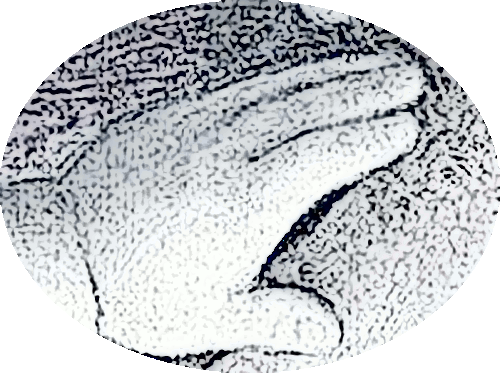
Salt fold |
- When something is scattered, it feels unmanageable, by
folding the paper 3 times, this allows you to contain it and take
control.
- The number 3 carries a strong symbolic meaning in
various cultures because it represents the connection between past,
present and future.
- By folding the paper 3 times you are
declaring that you are closing the past, protecting the present and
your peace, and creating a clean open future, full of possibilities.
- As you fold, reaffirm by stating at each step, 'I seal all
negativity here, this no longer has power over me.'
- The first
fold should be folded away from you which pushes the negativity away
and by the third fold, focus on closure, sealing away everything you
have transferred onto the paper.
- Hold the folded paper in your
hand for a minute and envision all your problems isolated far away
from you.

Salt bag |
- The plastic bag is an energy seal and when you place the
white paper and a genorous amount of salt inside the bag and seal
it, that acts as an energy lock.
- Make sure the salt completely
covers the paper and at this moment, any leftover negative energy
the paper didn't capture will be pulled in by the salt, which also
prevents them from escaping again.
- As you pour the salt into
the bag, visualize it as a bright light purifying everything and
isolating.
- This bag represents the barrier between you and
negative energies and is a way of saying that it no longer belongs
to you.
- By reinforcing this, it shows you are willing to leave
behind everything that holds you back.
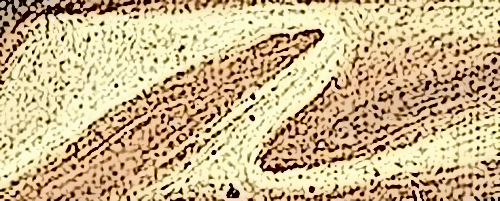
Salt step |
- Every step is a symbol, a message you send to the
univere, and at the same time, to your own mind as reinforcement so
it really sets in you are done with it.
- When you understand the
steps, and how they impact your emotions and energy, the most
important step is writing and releasing.
- By sealing the bag,
you are affirming that these energies no longer have access to you
and are completely separated from your life.
- And reaffirm by
speaking that none of this energy can reach you again.
- It's all
like cleaning out a messy drawer, you feel like you've organized
something important in your life and gotten rid of what you no
longer need.

Salt roped off |
- Open the bag and add a small amount of water to the bag,
just a few drops and this activates the salt and enhances it's
purifying effect, now seal the bag a final time.
- In the
physical world, freezing means immobilizing, stopping time, roping
off, and preventing something from continuing its course.
- When
you freeze your problems, you are sending a powerful message to your
subconscious that you will no longer tolerate these negative
energies which brings a deep sense of relief.
- The final step of
placing the bag into the freezer, is the concept of freezing
negativity, where the final gesture is like a decree that everything
is completely neutralized.
- Make a final declaration about all
this energy permanently released from your life.
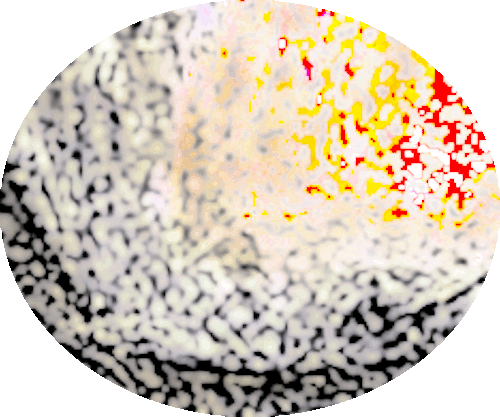
Salt thaws ice |
- Ice carries a profound meaning, it represents the
absense of movement and the end of a cycle.
- The bag should
remain in the freezer for 7 days and in many cultures, 7 is
considered a sacred number associated with completion and
perfection.
- This period allows your mind and body to adjust to
your new reality. a life free from the negative influences that once
affected you.
- Throw the bag away in a location far away from
your home and declare that you 'leave all of this behind.'
|
Alchemy |

Salty
Swiss alchemist
|
- Paracelsus,
who was born as Theophrastus von Hohenheim (1493-1541), was a Swiss
physician, alchemist, lay theologian, and a philosopher during the
German Renaissance.
- He styled himself as Para-Celsus, so going beyond Celsus, Aulus Cornelius Celsus
(25 BC to 50 AD), a very respected 1st-century Roman medical writer.
- The new name he chose made a statement about how his new medicine surpassed the ancient authorities so revered in universities
at that time.

Salt pills |
- Paracelsus introduced new chemical agents
such as inorganic salts, metals, and minerals into medicine.
- He pioneered the use of chemicals and minerals in medicine
and is considered the father of chemistry.
- He stressed the dosage of the medicines used, and
tried to reform medical education.
- Paracelsus invented chemical therapy, chemical urinalysis, and suggested a biochemical theory of digestion.
- Salt tablets have been used for many years to treat heat cramps and restore electrolytes lost through sweating.
|
Every body consists of three ingredients. The names of these are Sulphur, Mercury, and Salt.
(Paracelsus)
|

Sylph |
-
Paracelsus accepted the concept of the four elements; water, air, fire, and earth; he saw them as a foundation for other properties on which to build.
- Salt plays a role in alchemy as the physical 'body' which remains after combustion, the corporeal substance that survives death to reinaugurate new life.
- Salt is made up of the fire and water elements.
|
Paracelsus also described four elemental beings, each corresponding to one of the four elements: Salamanders, which correspond to fire; Gnomes, corresponding to earth; Undines, corresponding to water; and Sylphs, corresponding to air.
(Wikipedia)
|
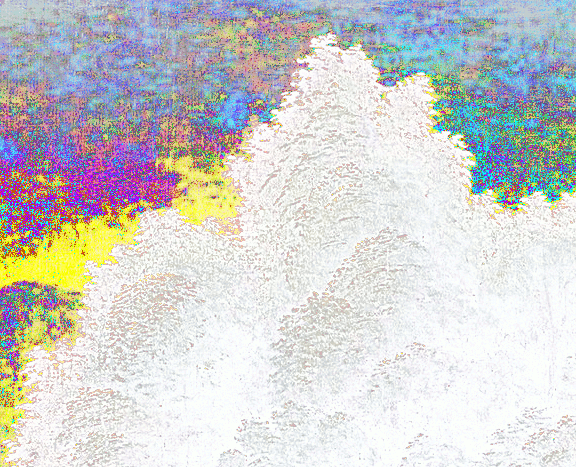
Salt
element |
- From his study of the elements, Paracelsus adopted the idea of tripartite alternatives to explain the nature of medicines.
- He believed that medicines were composed of the tria prima ('three primes' or principles): a combustible element (sulphur), a fluid and changeable element (mercury), and a solid, permanent element (salt).
|
The tria prima also defined the human identity. Salt represented the body; mercury represented the spirit (imagination, moral judgment, and the higher mental faculties); sulphur represented the soul (the emotions and desires).
(Wikipedia)
|
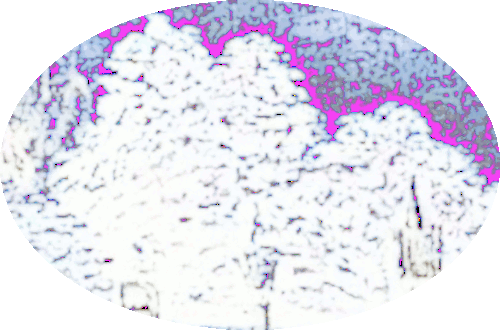
Mercury-Sulphur-Salt |
-
The first mention of the mercury-sulphur-salt model was in the Opus paramirum dating to about 1530.
- Paracelsus believed that the principles sulphur, mercury, and salt contained the poisons contributing to all diseases.
|
Some children are born from heaven and others are born from hell, because each human being has his inherent tendencies, and these tendencies belong to his spirit, and indicate the state in which he existed before he was born.
(Paracelsus)
|
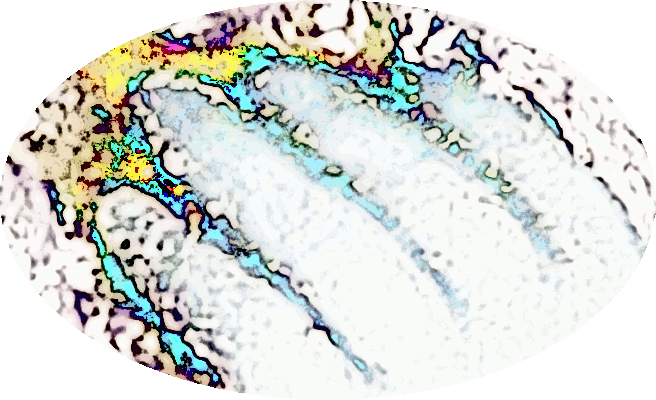
Salt minerals |
- Paracelsus also realized the foods we eat can poison us.
- He was the first to determine that minerals in drinking water
like lead could cause health problems such as goiters.
- He very clearly expounded the concept of dose response in his Third Defense, where he stated that “Solely the dose determines that a thing is not a poison.”
|
After the defeat of that mighty monarch, Mithridates, Gnaeus Pompeius found in his private cabinet a recipe for an antidote in his own handwriting; it was to the following effect: Take two dried walnuts, two figs, and twenty leaves of rue; pound them all together, with the addition of a grain of salt; if a person takes this mixture fasting, he will be proof against all poisons for that day.
(Naturalis Historia)
|

Salt pile |
- In alchemy, the three major components, salt, sulfur and
mercury are the primordial substances that compose all things in the
universe, each with an esoteric significance.
- Salt in
particular, is associated with the physical body and the
crystallization of spiritual energy in the material world.
- Salt
is the principle of fixation the force that gives form and structure
to chaos making it comprehensible and useful.
- Alchemists
believe that salt contained the key to transmutation both of the
body and the soul.
|
The Hermetic Problem of Salt
Olympiodorus depicts an ouroboric serpent to which some important symbolic nuances are added. In addition to the usual henadic (unitary) symbolism of this ancient motif, the text displays its serpent with four feet and three ears.
The glosses to the image inform us that ‘the four feet are the tetrasōmia’ (the four elemental bodies) while the three ears are ‘volatile spirits’ (aithalai).
This relationship of
unity to duality, duality to
trinity, and trinity to quaternary is pivotal to the Hermetic physics that Schwaller would attempt to convey in terms of an alchemical Farbenlehre (cf. the Pythagorean tetraktys). (Aaron
Cheak, PhD)
|

Salt spiritual
elevation |
- In the process of alchemy, salt underwent various
purifications representing the Adapt's journey toward enlightenment.
- The human soul can also be transformed and elevated through
spiritual elevation.
- Salt is not just a physical element but a
symbol of the spiritual journey in the quest for perfection.

Salt enlightenment
|
- Salt also plays a crucial role in internal alchemy in
the process of spiritual transmutation that occurs within each of us
in this context, salt is seen as a symbol of wisdom and knowledge.
- We can transform our soul, the same way alchemists transformed
salt and the journey of enlightenment is often compared to the
transformation of raw salt into pure salt.
|
The thing that is sown is perishable, but what is
raised is imperishable. The thing that is sown is
contemptible, but what is raised is glorious. The
thing that is sown is weak, but what is raised is
powerful. When it is sown it embodies the soul
(psyche), when it is raised it embodies the spirit
(pneuma). (I Corinthians
15:42-44)
|
|
Mythology |

Goddess of salt
water |
- In ancient Roman mythology, Salācia was the female divinity of the sea, worshiped as the goddess of salt water who presided over the depths of the ocean.
- Derived from Latin sāl, meaning 'salt,' the name Salācia denotes the wide, open sea.
- Sometimes, as Salachia, she is also known as the goddess of
springs, ruling over the springs of highly mineralized waters.
- Neptune was her consort.
- To the Greeks, she was known as Amphitrite
and was the consort of Poseidon.
|
How much salt water thrown away in waste
To season love, that of it doth not taste.
(Shakespeare, Romeo and Juliet)
|

Salty
Aphrodite |
- Salt, as an aphrodisiac, was connected specifically to the cult of Aphrodite, the goddess of desire par excellence.
-
Aphrodite was ‘brine-born’ which comes from aphros, 'sea-spume.'
- As Plutarch wrote, the nature of eroticism evoked by the
feminine is expressed using the very language of salt.
|
For this reason perhaps, feminine beauty is called ‘salty’ and ‘piquant’ when it is not passive, nor unyielding, but has charm and provocativeness. I imagine that the poets called Aphrodite ‘born of brine’ […] by way of alluding to the generative property of salt.
(Plutarch)
|
|
Magic |
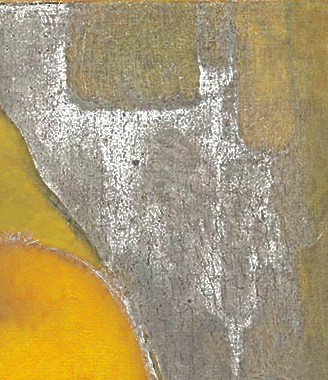
Samhain salt |
- Historically the use of salt and protection rituals
dates back to ancient traditions such as those of the Celtic peoples
Samhain festival that marked the beginning of winter a period when
the veil between the worlds is the thinnest.
- The Celts used
salt to ward off evil spirits by sprinkling it around their homes
and villages creating a spiritual barrier that protected them from
the spirits of the dead from causing harm.
- This tradition is
still carried on today and salt continues to be seen as a powerful
guardian.
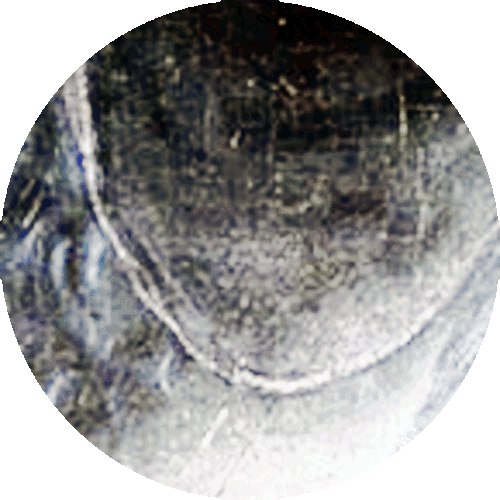
Sacred salt circle |
- In ceremonial magic, salt is often used to draw circles of
protection around altars and practice spaces.
- This circle
serves to protect the sacred space from the outside world by
creating a barrier that prevents the entry of malevolent entities or
negative energies.
- Is it the salt that creates this barrier, or
is it the power or intention of the one who uses it.
- By
delineating the space, salt establishes a clear threshold between
the profane and the sacred, allowing the practitioner to operate
safely within a spiritually protected environment.
|
In geometry, in a triangle, the given line is Mercury, the Angles are Sulphur, and the resultant triangle is Salt.
(Schwaller)
|

Salt spiritual
fortress |
- The practice of creating a magic circle with salt is not mere
superstition.
- It has roots in the ancient belief that salt can
creagte a true spiritual fortress but the power of salt in magic
goes beyhond mere protection.
- In certain practices of black
magic, salt is used to seal packs with infernal entities or to cast
devastating evil curses.
- Why would something so pure and sacred
be used for something evil, it should be avoided at all cost.
|
That person will be like a bush in the wastelands; they will not see prosperity when it comes. They will dwell in the parched places of the desert, in a salt land where no one lives.
(Jeremiah 17:6)
|
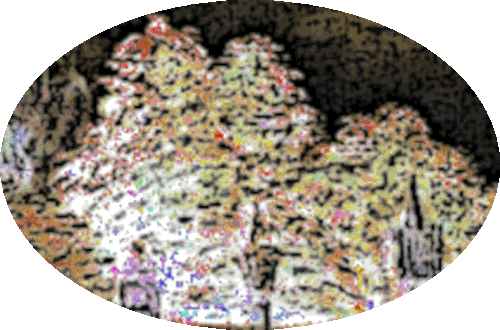
Salt mixed with
things |
- Salt, when combined with other elements such as blood, or
specific herbs, can create a powerful bond between the practitioner
and the forces of the underworld.
- However, since assault is a
sacred nature, the magic spell can reverse its properties and act
against those who manipulate it improperly.
- Which should make
you reflect on the dual power of salt which can be both a blessing
and a curse depending on how it is used.
|
Any man worth his salt will stick up for what he believes right, but it takes a slightly better man to acknowledge instantly and without reservation that he is in error.
(Andrew Jackson)
|

Salt exorcism |
- In other traditions, such as Kabbalah, salt is seen as a
symbol of resilence and immortality.
- It is used in rituals of
healing and exorcism to purify bodies and souls tormented by
negative influences.
- Salt is so effective in these rituals
because of its ability to restore the natural balance that has been
disturbed by evil forces.
|
Sea is the most pure and the most polluted water; for fishes it is drinkable and salutary, but for men it is undrinkable and deleterious.
(Heraclitus)
|
|
Health |
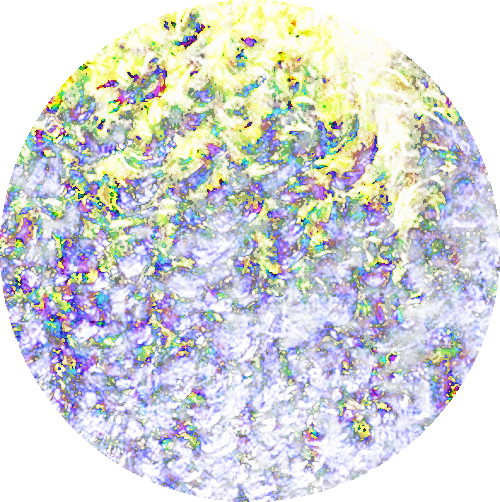
Salt heals |
- Salt has been used to prevent wound infection for millennia and, rightfully so, as salt has remarkable antiseptic
and antibacterial properties.
- Salt water can be used as a way to clean the mouth and keep bacteria on the gums at bay
and helps cure canker sores.
- Gargling with salt water is an effective method to heal throat
conditions like a sore throat.
-
Studies have shown that salt emits unique ions that purify the air, neutralizing environmental pollutants to help prevent symptoms of allergies and asthma
as well as increase energy, well-being, and resistance to illness.
- Salt can be
used to reduce and regulate the acid level and avoid possible health problems which an acidic environment causes.
|
Since ancient times, people have flocked to the Dead Sea in Israel for its healing benefits. This landlocked body of water contains salt with the highest concentration of therapeutic anti-inflammatory minerals on Earth, including calcium, potassium and silicon. The pain experienced by osteoarthritis patients plummeted by 80% after soaking daily in the Dead Sea salt baths for two weeks. The Dead Sea baths have also successfully treated symptoms of eczema and psoriasis.
(saltroomorlando.com)
|

Salt maladies |
- Salt increases blood pressure and the risk of stroke as well.
- Long-term high salt consumption will support the threat of kidney failure.
- Stomach cancer risk may also be associated with the damage of too much salt.
- In order to avoid these serious risks and improve our life quality, we should be careful while utilizing the benefits of salt.
- Processed foods are especially overloaded with salt so cook for
yourself whenever possible.
|
The incorruptible body will be earthly, but without moisture and coarseness, having been unutterably changed from animate to spiritual, so that it will be both of the dust and heavenly. Just as it was created in the beginning, so also will it arise, that it may be conformable to the image of the Son of Man by entire participation in deification. (Saint Gregory the Sinaite)
|

Salt bath |
- Salt can also be used in personal liberation rituals if
you are under spiritual attack a salt bath can help cleanse your
aura and remove any negative energy that might be attached to you.
- This bath should be done with consecrated salt and during the
process it is important to visualize the salt dissolving all the
spiritual impurities from your body.
- Some believe this process
not only purifies the body, but it also strengthens the aura making
it more resistant to future attacks.
|
Some include salt with the most important spices and healing materials, calling it the real ‘soul of life’, and it is supposed to possess such nourishing and enlivening powers that mice if they lick salt at once become pregnant.
(Plutarch)
|

Salt pillow |
- Using salt at nighttime
protection is also an ancient practice especially since spiritual
vulnrability is greater during sleep and is accomplished by
sprinkling a little salt under the bed or pillow.
- A Himalayan salt
pillow is perfect for treating tired, aching muscles anywhere on the body
and since the pillow is made out of salt, it will contour to any body part.
|
So Jacob rose early in the morning, and took the stone that he had put under his head and set it up as a pillar and poured oil on its top. He called the name of that place Bethel; however, previously the name of the city had been Luz. Then Jacob made a vow, saying, “If God will be with me and will keep me on this journey that I take, and will give me food to eat and garments to wear, and I return to my father’s house in safety, then the LORD will be my God. This stone, which I have set up as a pillar, will be God’s house, and of all that You give me I will surely give a tenth to You.”
(Genesis 28:18-22)
|

Salt cave |
-
Salt cave therapy (halotherapy) consists of sitting in a room where one is surrounded by a variety of salt distributors.
- The negatively charged ionized salt and trace minerals that are present in the cave's atmosphere
can naturally draw toxins and impurities out of the body, reduce inflammation, and improve respiratory ailments like asthma by clearing the lungs.
- People who have severe or uncontrolled hypertension, acute or active respiratory infections, or contagious conditions should avoid salt therapy.
|
The room may consist of one or more salt panels, salt lamps, salt particles spread out on the floor (like a beach), a halogenerator salt therapy machine, or other salt surfaces.
(rejuvenateyouohio.com)
|

Ayurveda
healing with salt |
- Ayurveda is a system of traditional medicine native to India, which uses a range of treatments, including panchakarma ('5 actions'), yoga, massage, acupuncture and herbal medicine, to encourage health and wellbeing.
- Ayurveda is a 5000-year-old medical system that uses natural and holistic approaches to keeping your mind, body and spirit healthy.
- An example is hingvastaka, a famous herbal formula used to both promote digestion and remove any congestion in the GI tract.
|
Salt water when it turns into vapour becomes sweet, and the vapour does not form salt water when it condenses again. (Aristotle)
|
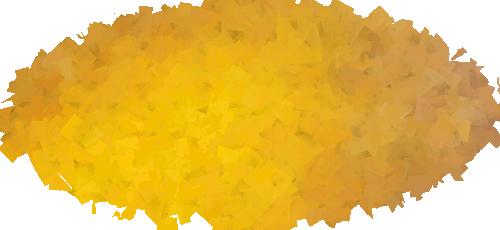
Gold salt |
- The wealth of essential minerals in
rock salt endows it with unique health-promoting properties, making it an esteemed ingredient in traditional remedies for digestive issues, respiratory ailments, and skin conditions.
-
In what is called gold therapy, gold salts stop cells from releasing chemicals that can harm tissues.
- Despite its many benefits, salt, in today's modern medical system has been questioned and demonized.
|
Gold salts are indicated for the treatment of rheumatoid arthritis that is unresponsive to conventional chemotherapy. (ScienceDirect.com)
|
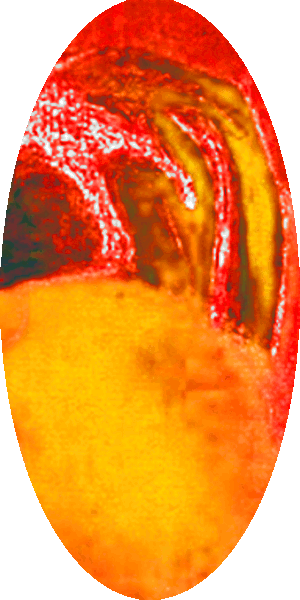
Salty heart |
- Eating too much salt can lead to high blood pressure, which is a leading risk factor for heart disease.
- More than 70% of the sodium we consume comes from packaged, prepared and restaurant foods due to salt added for flavoring, stabilizing, preserving and reducing bacterial risk.
- Eating less sodium can reduce your risk for high blood pressure, fluid retention, heart disease, stroke, kidney issues, osteoporosis and cancer.
|
Excess sodium in your bloodstream pulls water into your blood vessels, increasing the amount (volume) of blood inside them. When more blood flows through your blood vessels, blood pressure increases. It’s like turning up the water supply to a garden hose — the pressure in the hose increases as more water is blasted through it. Increased blood flow also makes the heart work harder to pump more blood through the body.
(heart.org)
|
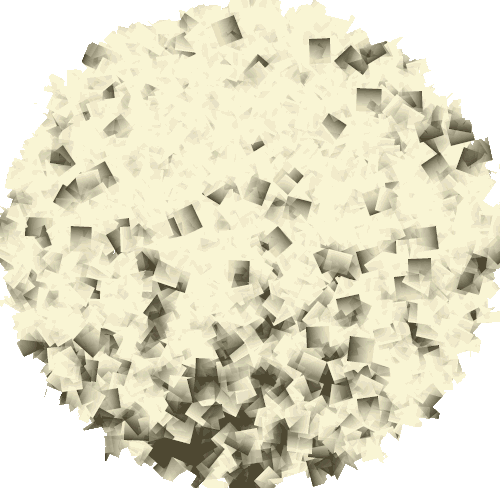
Epsom salt bath |
- Epsom salts or other salt used as a medicine and is also known as magnesium sulfate.
- It's a chemical compound made up of magnesium, sulfur, and oxygen
and despite its name, Epsom salt is a completely different compound than table salt.
- Although it looks just like salt!
- Humans have been taking Epsom salt baths for centuries to heal and ease muscular aches, soreness and stiffness, and even mental stress.
|
A bilious philosopher’s opinion of the world can only be accepted with a pinch of salt, of Epsom salt by preference.
(Aldous (Leonard) Huxley)
|

Smelling salt |
-
Smelling salt is ammonium carbonate, sometimes with added perfume, that is inhaled as a mild irritant to the mucous membranes, to help restore consciousness.
- Any material used in this way can be considered a smelling
salt.
|
Jumping Salty was the name of a 1936 song by Ricky Simpson.
(merriam-webster.com)
|
|
Technology |
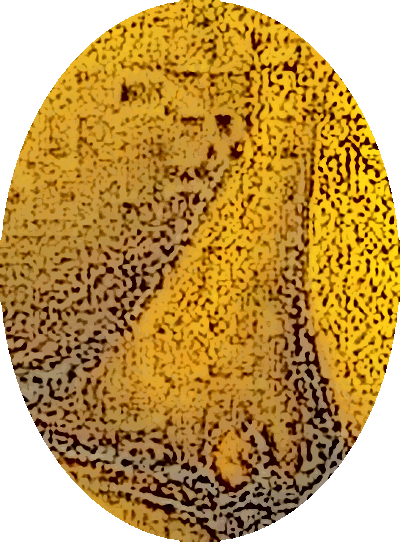
Himalayan salt lamp |
- These lamps have a unique way of cleansing the energy in a room;
it's almost like they soak up all the negative vibes, leaving the space feeling lighter and more serene.
- Light the room with a soothing pinkish golden glow that is very
warm and comforting and helps your mental state.
|
Ye are the light of the world. A city set on a hill cannot be hid. Neither do [men] light a lamp, and put it under the bushel, but on the stand; and it shineth unto all that are in the house.
Even so let your light shine before men; that they may see your good works, and glorify your Father who is in heaven.
(Matthew 5:14-16)
|
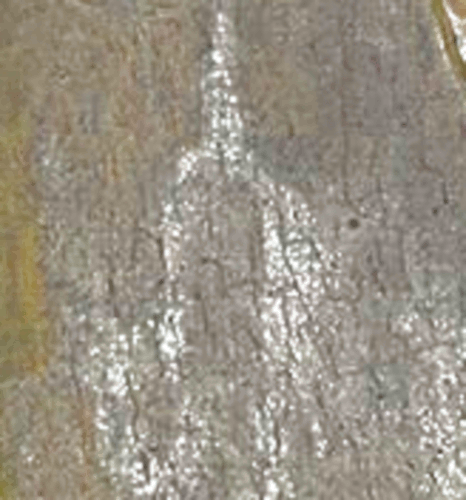
Salt battery |
- In saltwater batteries, a liquid solution of salt water is used to capture, store, and eventually discharge energy.
- The world’s first molten salt battery is turned on in Denmark.
- Molten-salt batteries are a class of battery that uses molten salts as an electrolyte and offers both a high energy density and a high power density.
- This new sea salt battery has 4 times the capacity of lithium.
|
We wish to suggest a structure for the salt of deoxyribose nucleic acid (DNA). This structure has novel features which are of considerable biological interest.
(Francis Crick)
|

Salt gun |
- Bug-a-Salt gun is a mosquito killing weapon that uses
salt.
- They are manually powered and fire ordinary table salt.
|
It ejects salt crystals at a high speed to provide a sort of near-microscopic buckshot that really does blast mosquitos (and other intruders) out of the air.
(vice.com)
|

Salt pit |
- The Salt Pit and Cobalt were the code names of an isolated
clandestine CIA black site prison and interrogation center outside
Bagram Air Base in Afghanistan.
- It was located in the location
of a prior brick factory for extrajudicial detention.
- The CIA authorized more than $200,000 for the construction of the prison in June 2002.
- The prison was dark at all times, with curtains and painted exterior windows.
|
Loud music was played constantly. The prisoners were kept in total darkness and isolation, with only a bucket for human waste and without sufficient heat in winter months. Nude prisoners were kept in a central area and walked around as a form of humiliation. The detainees were hosed down with water while shackled naked and placed in cold cells. They were subject to sleep deprivation, shackled to bars with their hands above their heads. Four of 20 cells of the prison had bars across the cell to facilitate this.
(Wikipedia)
|
|
Nature |
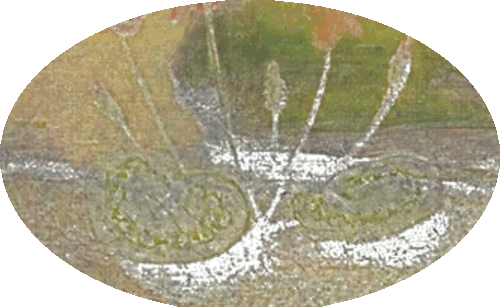
Alkaline soil |
- Alkali soil may or may not contain excess soluble salt
and is a type of soil with high amounts of calcium, sodium, and magnesium.
- Saline and alkaline soils are two separate things, not the
same, they're two different types of soil problems.
- The causes of soil alkalinity can be natural or man-made;
natural from substances in the soil, and man-made from the application of softened water in irrigation (surface or ground water) containing relatively high proportion of sodium bicarbonates and less calcium and magnesium.
- Soil with a pH level below 7 is acidic
soil, while soil pH levels above 7 indicate alkaline soil.
|
Soil alkalinity is associated with the presence of sodium carbonate (Na2CO3) or sodium bicarbonate (NaHCO3) in the soil, either as a result of natural weathering of the soil particles or brought in by irrigation and/or flood water.
(Wikipedia)
|
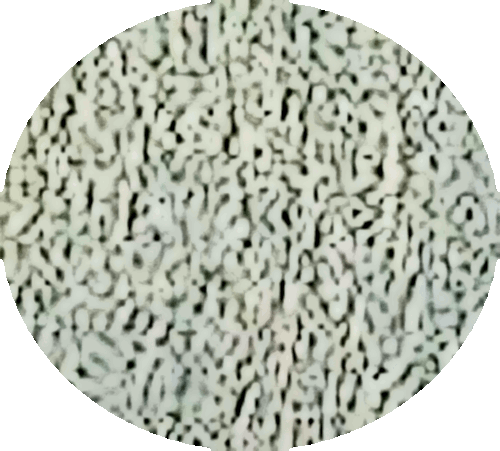
Saline
soil |
- The only difference between saline and alkaline soil is
the pH level; saline soil is extremely salty soil and a higher pH
compared to alkaline soil.
-
A soil may be rich in salts because the parent rock from which it was formed contains salts.
- Sea water is another source of salts in low-lying areas along the coast.
- Soil salinity is an enormous problem for agriculture under irrigation
especially in hot and dry regions of the world, where soils are frequently saline with low agricultural potential.
|
- Alkaline soil: A soil whose reaction is greater than pH 7.
- Acid soil: A soil whose reaction is less than pH 7.
- Saline soil has a pH less than 8.5. (Wikipedia)
|

Salt tolerant
plants |
- Large
amounts of salt in the soil do not bode well for vegetation other than specific salt-tolerant plants.
- Sandy soils near beaches retain less water and nutrients and an excess of salt spray carried in the wind prevents most plants from absorbing water properly.
- Salt damage may manifest as leaf burn, leaf drop, or plant death.
- The solution for beach communities and homeowners with roadside gardens in towns that use salt to melt winter's ice is to choose salt-tolerant plants.
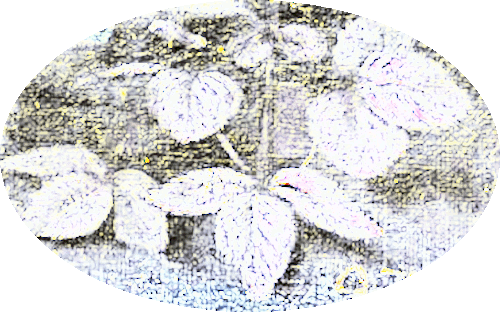
White
Coleus |
- Coleus is typically versatile to environmental conditions which makes it ideal for salty areas.
- Bougainvillea thrive in hot and sunny tropical and beachy areas.
- Winterberry holly is ideal for salty areas because of its versatility and ability to grow in just about any type of soil.
- Daylilies are perfect salt-tolerant plants because they tolerate light sandy or heavy clay soils and even thrive during droughts and floods.
|
Salt is good, but if it loses its saltiness, how can you make it salty again? Have salt among yourselves, and be at peace with each other.
(Mark 9:50)
|
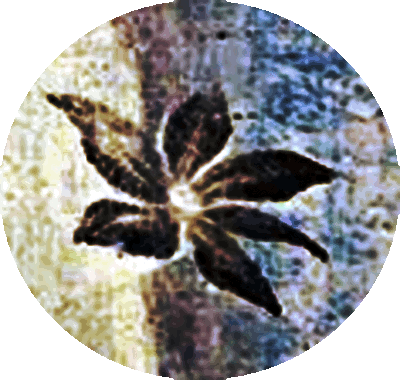
Too much salt
apparently |
- Moss rose is an incredibly unyielding,
drought-tolerant creeping annual and is extremely hardy, making it perfect for salty conditions.
- Bee balm is a hardy plant that can withstand extreme temperatures, making it ideal for rough and salty conditions.
- Salt cedar (Tamarix), native to drier areas of Eurasia and Africa, are evergreen or deciduous shrubs or trees growing to
59' (18 m) in height and forming dense thickets.
- Bayberry shrubs, famous for the candles and soaps made from their berries, tolerate salty or shifting sandy soils.

Salt cedar |
- Pin oaks are salt-tolerant making them ideal for heat-drenched beach areas.
- White oaks (and red oaks) are extremely durable, adaptable, and pollution-tolerant to use as
'street trees' that must endure street salt in the winter.
- Honey Locust tolerates a number of challenging conditions, including salt, pollution, dry soil, and compacted soil.
- Canary Island date palms are one of the types of palm trees that tolerate salt very well.
|
This is to be taken with a grain of salt.
(John Trapp’s Commentary on the Old and New Testaments, 1647)
|

Salt River |
- Salt River (Rio Salado) is a river in Gila and Maricopa counties in
Arizona.
- The name Salt River comes from the river's course over large salt deposits shortly after the merging of the White and Black Rivers.
- In ancient times, the river was home to the Salado and the Hohokam culture.
- The Akimel O'odham, also known as the Pima people, lived along the Salt River and dug canals, using irrigation to provide water to their villages and farms in the arid environment,
-
Also a slang term used in reference to losing an election; especially in the phrase
'rowed up Salt River.'
|
(Spanish: Río Salado, O'odham [Pima]: Onk Akimel,
Yavapai: Hakanyacha or Hakathi:, Maricopa language: Va
Shly'ay.
(Wikipedia)
|

Salty Dead Sea |
- The Dead Sea is so salty because it’s
only source is the Jordan River which has no outlet, meaning water can only exit by evaporating and leaving its minerals and salts behind.
- This means the Dead Sea has become increasingly briny over time as the salts accumulated, and it’s now estimated to be 9.7 times saltier than the ocean.
- You don't have to know how to swim there because there's so much
salt, you'll float with ease.
- The Dead Sea is the second saltiest lake on the planet, topped in brininess by Gaet'ale Pond, located in Danakil Depression, Ethiopia.
|
To render aid to the worthless is sheer waste. Rain does not freshen the Dead Sea, but only enables it to dissolve more salt.
(George Iles)
|
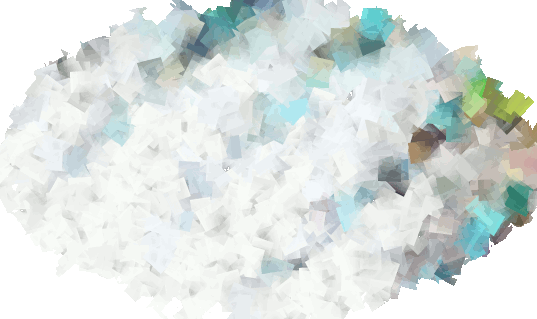
Salt fingers |
- The saltiness has been intensified as less water reaches the Dead Sea from the Jordan River due to things like damns and diversion for agriculture.
-
The water is so saturated with salt that it doesn't take much for salt crystals to precipitate on the Dead Sea's lake bed.
-
In response to increasing saline levels, salt has been settling on the lakebed, creating a salt layer that
increases several inches each year
through a process known as 'salt fingering.'
|
In 1992, life put on quite a show in the Dead Sea when a bloom of Dunaliella parva flushed the top layer of water that was likely diluted enough by rainwater to make it possible.
Despite D. parva being a green alga, the bloom turned the Dead Sea red due to high levels of bacterioruberin. So good work, the Dead Sea. Nothing will convince the planet you’re still alive quite like looking like a big puddle of salty blood.
(iflscience.com)
|

Salt flats |
-
The Bonneville Salt Flats is like no other place on earth.
- It
is a salt crust ranging from a few inches to 5 feet thick forming a perfectly flat, uniform, blindingly white crust as far as the eye can see.
- The flats are about 12 miles long and 5 miles wide and cover about 46 square miles,
110 miles west of Salt Lake City, Utah.
- Aside from the beautiful views, the salt flats are an international
attraction for auto racers.
- Several speed records have been set at the flats
and Speed Week is a Bonneville Salt Flats tradition that takes place at the Bonneville International Speedway in August.

Salt marsh |
- A salt marsh is a coastal ecosystem in the upper coastal intertidal zone between land and open saltwater or brackish water that is regularly flooded by the tides.
- Salt hay is made from salt grass or grass growing on tidal marshes.
|
But the swamps and marshes will not become fresh; they will be left for salt.
(Ezekiel 47:11)
|
|
Salt Production |

Salt City |
- Jesuit missionaries visited what is now the
Syracuse, New York, region in the mid-17th century and
reported salt (brine) springs around the southern
end of 'Salt Lake,' known today as Onondaga
Lake.
- The Onondaga people, part of the Iroquois nation, knew their water was different, but believed it to be cursed by an evil spirit.
- In August of 1654, a Jesuit missionary named Simon Le Moyne arrived to visit with the Onondaga people.
- During his stay, he drank from a spring and recognized it to
be saltwater.
|
Nibshan, the City of Salt and En Gedi—six towns and their villages.
(Joshua 15:62)
|
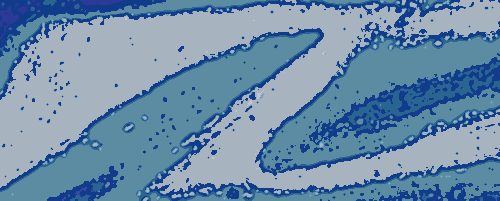
Salt springs |
- The production of salt began in 1797,
when the New York State legislature designated a 1-mile-wide
strip of land around the southern half of the lake as
the Onondaga Salt Springs Reservation.
- From 1797 through 1917, the Onondaga Salt
Reservation produced more than 11.5 million tons
of finished salt.
- Syracuse, known as 'Salt City,' was the top salt producer in the country for much of the 19th century.
|
Can both fresh water and salt water flow from the same spring?
(James 3:11)
|
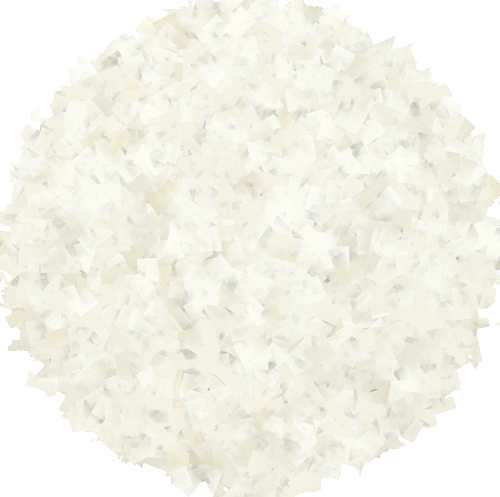
Salt brine |
- The salty brine was processed in two ways, solar evaporation and boiling.
- In the solar evaporation method, the salt water was pumped into large, shallow vats and exposed to the sun for a few weeks, but had to be covered whenever it rained.
- As the water evaporated, salt was raked up and then packaged for shipping.
- This process produced coarse salt whereas the boiling method produced fine salt.
|
Everyone will be salted with fire.
(Mark 9:49)
|

Salty Erie Canal |
- The Erie Canal, along with the salt industry around Onondaga Lake, would be the single largest catalyst of growth for the city of Syracuse.
- Before the canal, Syracuse was a low-lying backwater town that was a major producer of salt,
however, the salt was too expensive to transport, so economic growth was largely limited.

Canal weigh station |
- During the Civil War, the salt economy saw a surge because food transported from the North to the South was preserved in salt
which came from Syracuse and became accessible and easy to transport because of the Erie Canal.
- At the end of the line, barges were able to transfer their goods
to ships that sailed out to the Great Lakes and then down the Mississippi River.
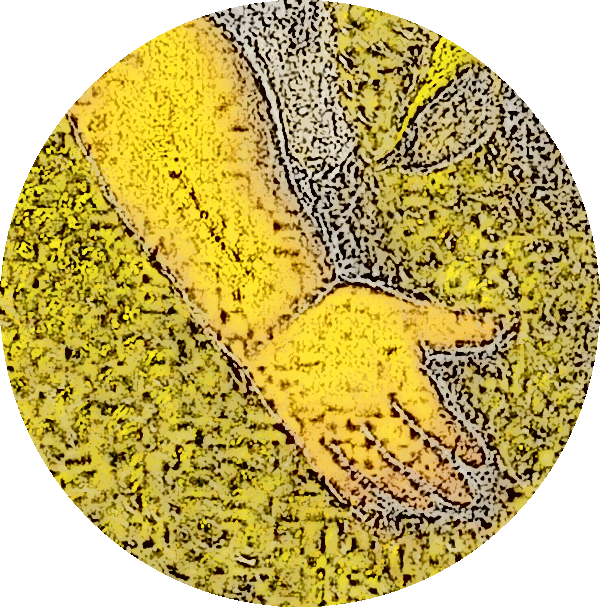
Salt
potatoes |
- Syracuse salt potatoes are a regional specialty of the area.
- Salt potatoes date to the 1800s, and were invented by local salt mine workers who created a simple and inexpensive lunch by boiling small potatoes in brine
while they were working.
- The potatoes are still very popular today in Central New York, making an incredibly easy and delicious side dish.
|
Let the sky rain potatoes!
(Shakespeare, The Merry Wives of Windsor)
|

City Salt |
- In Syracuse City, Utah, salt and railroads are closely tied together
and the earliest mention comes from the mid 1880s when the town of Syracuse was so-named because of the salt that was being harvested and shipped by wagon to the Utah Central line.
- The name was taken from Syracuse, New York, a large center for salt shipments at the time.
- Salt from Syracuse, Utah, was then transloaded from wagons to the cars of Utah Central and shipped north to the Montana
silver mines.
- The salt shipments were growing rapidly, so
local interests organized the Ogden & Syracuse Railway in 1887 to
build a spur from a new station called Syracuse Junction, west to
the salt plants on the eastern shore of Great Salt Lake.
|
A salt maker on the lake, printed the name
Syracuse on his salt bags. The name came from a salt
company he knew of in Syracuse, New York.
(syracuseut.gov)
|

Great Salt Lake |
-
When the pioneers moved to Utah, salt rendering became one of the first industries established for external trade.
- They boiled Great Salt Lake water over wood fires until only salt remained.
- Evaporation ponds were built on the shores of the lake and brine pumps
were installed to repeatedly fill the ponds.
- However, this lake salt tasted bitter due to impurities in the water,
so instead, it was sold to mines in Montana where salt was used to refine silver.
|
Is tasteless food eaten without salt, or is there flavor in the sap of the mallow?
(Job 6:6)
|

Salt de-icing |
- It is an artisanal sodium chloride and is currently mined some 370 feet under
and is sold unrefined and unprocessed.
- Today, salt from the Great Salt Lake continues to be harvested mostly for industrial purposes including metal extraction, water softening and road
salt (de-icing).
- Anyone flying west from Salt Lake City has seen the multicolored drying beds.
|
The degree 48 … in my thermometers holds the middle between between the limit of the most intense cold obtained artificially in a mixture of water, of ice and of sal-ammoniac or even of sea-salt, and the limit of heat which is found in the blood of a healthy man.
(Gabriel Fahrenheit)
|
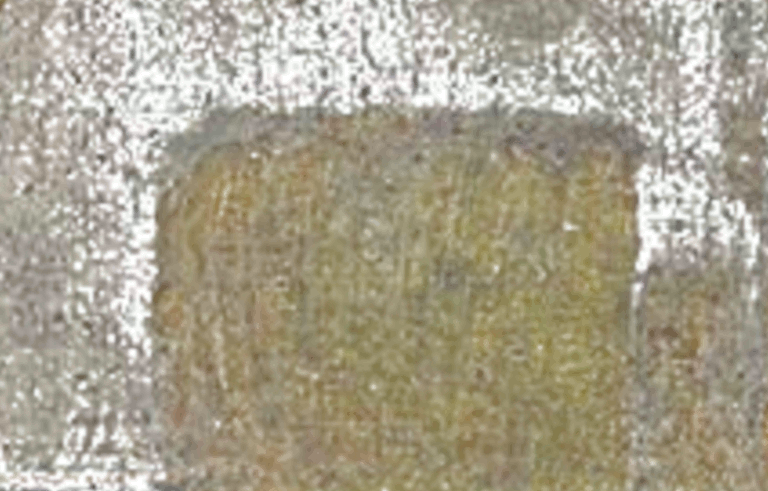
Salt mine |
- More recently developed, is the salt mine west of Redmond, Utah, near Salina.
- Redmond salt deposit predates the Great Salt Lake, which came from the drying of Lake Bonneville.
- The salt deposit was located approximately 30 feet below what were
once corn fields.
- Redmond's culinary salt is sold worldwide as Real Salt, but the majority of their production is for agriculture, animal health and de-icing.
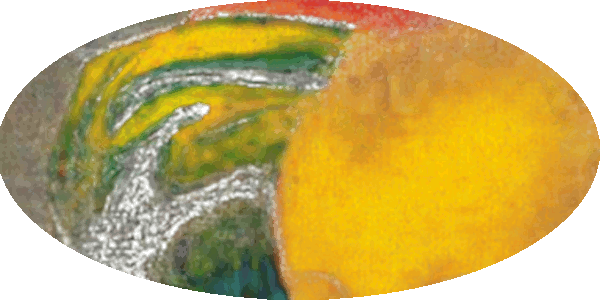
Salt real |
- The multi-colored hue of Redmond
salt comes from more than 60 naturally occurring minerals including calcium, copper, magnesium, potassium, zinc and more.
- Above ground, the salt works encompass several towering structures where various grades of salt are crushed and screened
and the actual mine is a yawning hole in the ground, and the start of miles of salt tunnels.
- Redmond could continue to mine at the current rate of 50,000 pounds per day for another 400 to 600 years.
- Natural salts from around the world have their own unique
flavor profile; the Utah salt is slightly sweet, which enhances
subtleties in food.
|
Salt settled to the bottom of the Sundance Sea in the Jurassic Period of the Mesozoic Era, roughly 200 to 145 million years ago. Trapped under 5,000 feet of volcanic ash and bentonite clay, it stayed pristine for aeons. As time wore on, the salt vein was pushed up vertically by tectonic shifts — called diapir — in the Continental Divide, rousing it to near surface level.
(Austen Diamond, Mighty Mineral)
|

Salt miner |
- Salt is now plentiful, but until the Industrial Revolution, it was difficult to come by, and salt was often mined by slaves or prisoners.
- The earliest found salt mine was in Hallstatt, Austria where salt was mined 5000 BC.
- Can be like a chicken with her egg.
|
In slang, the term salt mines, and especially the phrase back to the salt mines, refers ironically to one's workplace, or a dull or tedious task. This phrase originates from c. 1800 in reference to the Russian practice of sending prisoners to forced labor in Siberian salt mines.
(Wikipedia)
|

Salt cultivation |
- Ancient China was among the earliest civilizations in the world with cultivation and trade in mined salt.
-
Chinese salt was extracted mainly from the sea, and salt works in the coastal areas in late imperial China equated to more than 80 percent of national production.
|
In 1041, during the Song dynasty, a well with a diameter about the size of a bowl and several dozen feet deep was drilled for salt production.
(Wikipedia)
|
|
Trade |

Salt trade |
- Gold-Salt Trade (Trans-Saharan Trade), was an extensive network of trade routes that linked the Mediterranean world with West Africa during the Middle Ages.
- The trade network gets its names from its paths crossing the Sahara Desert and from the most popular goods traded (gold and salt).
- It was not a single, continuous route, but rather a complex network of interconnected routes that stretched thousands of miles.
|
The Trans-Saharan Trade Route was instrumental in
the development of the civilizations that participated
in it. The trade route facilitated the exchange of
ideas and cultures between the people of Europe, the
Middle East, and Africa.
(studentsofhistory.com)
|
Moral of the story!
It appears that salt is what you make it, so make
it all good. |
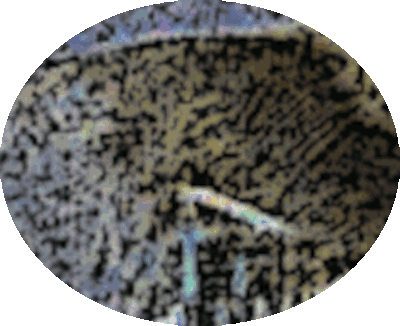
Salt base |
- In its natural form, cocaine is a molecule found in the coca leaf.
- Some disagree about the chemical nature of that molecule but, when it is extracted from coca leaves to make coca paste, the result is by all accounts a base.
- Coca paste is then combined with an acid to produce cocaine hydrochloride commonly known as powder cocaine which is a salt, not a base.
-
Salt or cocaine, a fix is a basic instinct.
- Apparently we're all addicted
to salt.
|
Researchers deprived mice and rats of salt, then offered them salty water to drink. After killing the animals they examined gene activity in the hypothalamus, the brain’s “reward” centre. They found that gratification genes had been activated – the same genes that are active in cocaine and heroin addicts when their craving has been satisfied.
(newscientist.com)
|
Sufficient for us is the testimony of things
produced in the salt waters
and now found again in the high mountains,
sometimes far from the sea.
Leonardo DaVinci

| |
 |
 |

